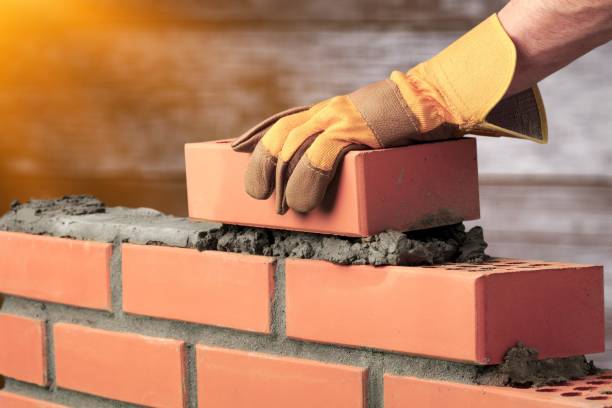Everything about Bricklayer Auckland
Wiki Article
8 Simple Techniques For Bricklayer Auckland
Table of ContentsThe Greatest Guide To Bricklayer AucklandThe Bricklayer Auckland PDFsOur Bricklayer Auckland DiariesSome Known Factual Statements About Bricklayer Auckland
The difference in between Absolutely no and timeless masonry is in the laying of the block. The brick is no longer pushed vertically, but tilted.In addition, we likewise took note of an excellent percentage between the length and width of the brick to make sure that it is perfect for working with a cot bond. This way the job continues quickly. Advantage, For a specialist in this manner of working is rarely an obstacle. He can deal with the material/equipment that is familiar to him.
Bricklayers are an important profession in the construction market, in charge of laying bricks, pre-cut stone and cinder block in mortar. Bricklayers construct, prolong and also repair residential and also business structures, as well as other structures such as foundations, walls, smokeshafts or ornamental masonry. Getting to completion of a job and being able to say 'I built that' offers an actual feeling of accomplishment for brickies.
Your time as a bricklaying pupil will typically be split in between your employer as well as training supplier (such as a college), with at the very least 20% of your normal working hrs spent on training. Your training may take place weekly, every month or in a separate block of time, and also it can happen at your place of job, at your training service provider or online.
The Single Strategy To Use For Bricklayer Auckland
When looking into construction, you invariably discover that any new or cutting-edge suggestion has actually been attempted over and over once again, typically extending back years. Among these new-but-actually-old suggestions is the concept of a mechanical bricklayer, a device to automate the construction of masonry walls. It's simple to see the allure of this concept - masonry building appears almost perfectly matched for automation.It does not look like it would certainly call for literally intricate activities - each block obtains a layer of mortar applied, and also is merely laid in place beside the previous one. And due to the fact that each traditional joint is the same size, positioning is nearly deterministic - each brick coincides set distance from the previous one.
These machines could not notice anything regarding their atmosphere, or step where a brick needed to go - they merely squeezed out a layer of mortar as well as mechanically put a brick at normal periods (Bricklayer Auckland). It's vague how several of these machines ever made it past the attracting board, yet at the very least one of these (John Knight's) was utilized to develop a block wall surface that apparently still stands today.
For many years, masonry has actually declined in relevance as a building modern technology in the developed globe, and with it the rate of interest in automating it. Unlike with concrete 3D printing, where there are loads of attempts to establish the modern technology, I can only locate a handful of present initiatives to automate masonry. Bricklayer Auckland.
Fascination About Bricklayer Auckland
It's capable of placing blocks in limited hallways or intricate edges, and also Hadrian can create all the walls of a tiny structure with simply a few moves of the lorry. Hadrian can currently set about 200 obstructs a hr, yet they're intending to be able to do 1000 obstructs a hr or more (the blocks it establishes are different from the block stonework utilized in the US, yet in US masons can set someplace in the community of 400 blocks a day).
SAM has a collection of sensors to make up for the motion of the platform and also ensure it's putting bricks websites degree, as well as can collaborate with bricks of all different sizes (though it won't construct CMU obstruct walls). It gets placed to a movable scaffolding that's raised progressively as the wall is finished.
The promotional product on Building Robotics' site recommends that it's no much longer their main focus - more emphasis is provided to their various other product, MULE.Other than SAM as well as Hadrian, there are a couple of other mechanical bricklayers in various stages of development. You additionally see the periodic scholastic initiative. One area where we do see some industrial success with mechanical bricklaying is with block roads - a range of firms provide equipments that can "publish" a section of roadway made of bricks.
The Bricklayer Auckland Statements
A slightly different classification of equipments aimed at improving masonry efficiency is what I'll call "stonework aides". These are equipments created to help with literally raising the more tips here block (they appear to be extra usual with block than block) and also taking the stress off the mason, while still allowing the mason to adjust it right look these up into placement, Masonry aides date from at the very least 1994, when the army explore MOTHER, the Mechatronically Assisted Mason's Aid.
Report this wiki page